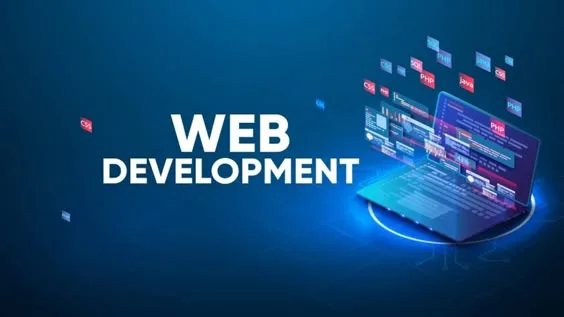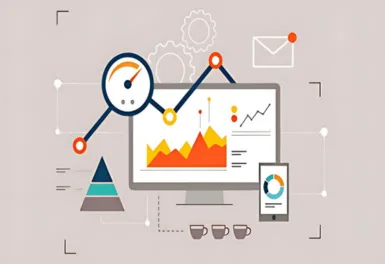Is your Shopify store not bringing the necessary results? Well, your slow-loading website might be the roadblock to your business. Especially in 2025, slow speed optimisation can cost you a hefty price and result in lost leads. Your site speed will determine its impact on the website’s UX, overall SEO, and, consequently, your conversion. If you’re looking for a comprehensive guide to avoid losing leads, this article is all you need. By the end of this blog, we will provide you with all the necessary information on the tools, strategies, and tips to improve your Shopify site speed and boost conversions.
Why Shopify Site Speed Matters in 2025
Shopify’s performance is not just limited to a faster loading page. Its speed can determine the overall user experience and their expectations. Thus, speed is a non-negotiable aspect that should never be taken for granted. Moreover, it is confirmed by Shopify Core Web Vitals, a metric used by Google to ensure your website has all the necessary factors for ranking in search results. Losing leads can also mean losing your place in the search results, whereas an improved loading speed can fetch you over 8000 USD of revenue. Want proof backed by statistics? Here are the core elements that are affected by a slow loading rate. Bounce Rates- How long do visitors stay on your website? If the bounce rate is higher, it means your site might be slow and is likely frustrating your customers. Result – lower conversions. Additionally, slow speed increases the bounce rate by over 30%. SEO Ranking- No matter how well your website is optimised, a slow-loading website can prove to be a hindrance to your business. Hence, correcting the slow speed is more important. Ad Quality Scores- Shopify speed can affect the overall Ad Quality Scores on Google. A slower-loading page directly affects higher CPC, lowered conversions, and thereby reduces visibility and user experience. Mobile User Experience- Shopify’s mobile speed can easily deter potential customers from visiting the website. Thus, slower site loading can lead to lower customer engagement, higher bounce rates and reduced SEO ranking.
How Fast Is Your Shopify Site?
Curious to know, what makes Shopify distinct from other sites? The answer is speed. The faster a site’s speed, the more visitors like it (fact: Nobody likes slow-loading sites). Hence, speed is the first and most vital aspect to correct to shoot up your online business on the site. Before taking the big leap to resolve the issue, let’s familiarize ourselves with the tools that can reduce Shopify’s load time. Here are our top picks:
- Pingdom
- GTmetrix
- Google PageSpeed Insights
- Chrome DevTools
These tools are must-haves for identifying the culprit slowing down your site speed. They run an eagle’s eye through the various parameters affecting your overall site performance, signal the possible bottlenecks and also areas that require optimization to take accurate actions. Let us run a quick review through the focus metrics: Focus Metrics:
- First Contentful Paint (FCP) – FCP analyses each metric from the moment the content loads on the visited page. It includes images, texts and content once the page begins to load.
- Time to Interactive (TTI) – Time to Interactive measures the total time it takes for a page to load and become interactive, identifying bottlenecks that hinder page performance.
- Total Page Size – A vital metric to ensure the pages, especially the larger pages, load faster. It analyses the overall time taken to load larger pages, providing an enhanced user experience.
- Number of Requests – This refers to the total number of HTTP requests. A reduced number of requests can help improve loading time and reduce the data required in the browser to download the page.
Shopify’s Built-in Speed Advantages
Shopify is a customer-friendly platform that manages most aspects required for speed optimisation, ensuring an enhanced user experience. It contains built-in advantages, thereby accomplishing a great deal on its own. From quick load times to better rankings on SEO, there are numerous benefits that Shopify offers. Here are a few perks that Shopify brings to its kitty:
- Browser caching (internal assets only) – The site stores necessary website data from the user’s browser. It makes it easier for the user to load the pages faster, without making the visitors wait.
- Fastly CDN integration – Shopify’s CDN, Cloudflare, assists in delivering global content. In addition, Fastly aids in improving page load speed, as well as utilizing the cache acquired from users to provide a personalized experience.
- Global infrastructure – It smoothens overall traffic, providing a robust server network and a faster loading pace.
- Server-side rendering for key content – It handles page rendering, providing a space for faster page loads, better performance, and an improved experience. It is impeccably useful in devices or networks known for their slow loading time.
However, the threat of third-party apps still exists. These, along with bloated themes, can prove to be a hindrance in providing your user a smoother shopping experience on the website. However, we also have a solution for that.
Step-by-Step Shopify Speed Optimization Strategy
1. Opt for a Lighter version theme that is performance optimized Fast Shopify themes are always the best pick to prevent your website from slowing down. Hence, it is best to choose a theme that doesn’t require the user to wait for loading. Few themes can cause unwanted bloating and impact performance. A lightweight theme enhances your website’s performance. After testing over 200 templates on Shopify using FCP (First Contentful Paint) and TTI (Time To Interactive) through Google PageSpeed Insights, we zeroed in on some of the themes you must avoid. These are:
- Dawn
- Sense
- Craft
- Crave
- Ride
2. Resize and compress images Resizing and compressing images is the next best way to avoid speed issues on the site. Often, businesses use larger images on their websites, especially eCommerce stores. It is also a notable phenomenon in the case of businesses that highlight products in listicles. Although these images aid in improving the UX as well as branding the store, they can have a significant impact on performance, as the image sizes are larger than those of CSS and HTML files. These images can make it heavier for the user to load them and take longer to download. Therefore, it is best to resize the image to match the render size and compress it to reduce its file size. Here are a few tools to help you load the images:
- TInyPNG
- Optimizilla
- Crush.pics
3. Opt for Lazy Loading of Offscreen Images Deferring offscreen images is a common recommendation when running through PageSpeed Insights. It means that the site is loading all the photos at once. As Shopify sites often use multiple images, lazy loading is a feasible method to ensure the speed is not affected. Use Shopify lazy loading =”lazy” attribute or libraries like lazysizes for better performance.
4. Convert GIFs to Static formats like WebP images, JPG or PNG GIFs can affect the overall performance of the page. To avoid, use lightweight formats like PNG, JPG or WebP. Using static images in place of animation, converting GIFs to lighter versions, or utilizing MP4 for video-style animation are a few ways to replace heavy GIFs and improve Shopify performance.
5. Control use of Third-Party Scripts and Shopify Apps Similar to WordPress plugins, Shopify also includes its Apps that make it easier for users to add functionalities. However, you do not need any developer background. These Apps help augment the site’s overall functionality, which is similar to third-party scripts. Yet, these factors go on to impact performance. Adding new apps sends multiple requests to the site.
- Occasionally, audit the installed apps and remove those that are not in use
- Disable apps that toggle specific scripts
- Consolidate tools like Google Analytics, Lucky Orange, and PayPal, Yotpo, Klaviyo, Hotjar, and Facebook Pixel whenever necessary
- Choose apps that serve multiple purposes instead of opting for several apps for small features
6. Make use of GTM (Google Tag Manager) GTM, or Google Tag Manager, is an excellent tool for managing and deploying marketing and analytical tags, such as Google Ads, Hotjar, and more. Also, GTM does not directly edit the Shopify theme codes. It helps consolidate all tags, reduce multiple scripts, and decrease loading time. Benefits:
- Reduces the requests and scripts that are added directly to the theme
- Allows tags to load easily, thereby improving the speed
- Allows you to turn tags on and off, delays the load without editing any code and set triggers
- Enables the Shopify theme code to remain lightweight
7. Reduce and Defer JavaScript JavaScript is a crucial aspect that determines the functionality of a Shopify store. However, an unoptimized or excessively used JavaScript can lead to a slowdown of the site, particularly when used on mobile devices. Hence, deferring and minimizing the script is necessary to make it load faster and render a better user experience. How to Implement it?
- Use the async and defer attributes in the script tags to prevent blocking while the pages are initially loading.
- Delete unnecessary comments, characters and spaces using Shopify theme settings
- Incorporate Shopify’s content_for_footer and content_for_header.
8. Delete Unused CSS Unused CSS tends to bulk up the pages and slow down the rendering process. Tools such as PurgeCSS in addition to the built-in theme audit option of Shopify, aid in eliminating the unused CSS. How to Clean Up Unused CSS
- Tools like UnCSS, Chrome DevTools, Coverage Tab and PurgeCSS help in identifying unused rules
- Streamline SCSS files or remove the unused selectors manually
- Use CSS Nano or Shopify’s minification settings to minify CSS
- Inject CSS only where they are needed the most.
9. Implement Preconnect and Prefetch Browser hints like Preconnect and prefetch help in speeding up the external resource loading facility, such as third-party scripts, analytics, fonts and more. The best-known practices include instructing the browser to connect with required domains like APIs or fonts Instruct browsers to establish early connections to required domains (such as fonts or APIs). For example, to establish early connections.
10. Conduct a Regular Audit of Pagespeed Regular audits of Pagespeed help maintain performance and test whether the top revenue-generating pages on mobile are loading correctly. Tools like GTmetrix, Google PageSpeed Insights, and Chrome DevTools help track the site’s performance. Best Practices to Apply
- Track the core web vitals like CLS, FID, LCP
- Use the built-in online store report of Shopify for performance tracking
- Monitor TTI (Time to Interactive) and TTFB (Time to First Byte)
Shopify Speed Benchmark: Where Do You Stand?
(Word count: 120-150)
H2
Based on data from 400+ Shopify stores:
| Metric | Top 20% | Bottom 20% |
|---|---|---|
| FCP | 2.7s | 5.9s |
| TTI | 9s | 30s |
| Page Size | 2MB | 5.5MB |
| Requests | 72 | 235 |
Pro Tools for Shopify Speed Testing
(Word count: 90-110)
H2
- WebPageTest
- Lighthouse
- Chrome DevTools
Combine insights from all tools for a holistic audit. Bonus Tips: Avoid These Speed-Killers Here are the top practices to avoid which can be speed-killers for your site:
- Installing too many apps
- Using oversized banners and unoptimized images
- Inlining too many JavaScript or CSS
- Embedding videos or third-party widgets without lazy loading
- Choosing bloated themes that are overloaded with scripts and features
- Not using CDN for external assets
Final Thoughts: Shopify Speed Optimization Is a Growth Lever Speed is a powerful tool for converting leads into business. With a faster Shopify store, it is much easier to improve SEO rankings, conversion rates and generate revenue. The search engine is all about speed and a good page speed can turn out to be an exceptional ranking factor, especially for indexing it on mobile. Reviewing your page on a timely basis, using innovative methods to optimize Shopify images and testing the page consistently can leverage your growth and thereby add momentum to your business.


